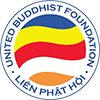Mục lục Kinh điển Nam truyền English Sutra Collection
Translated by: Unknown
Font chữ:
Then the thought occurred to Ven. Ānanda, "Here the Blessed One has just recovered from being ill, is not long recovered from his illness, and yet Mahanama the Sakyan asks him this very deep question. What if I were to take Mahanama the Sakyan to one side and teach him the Dhamma?" So Ven. Ānanda, taking Mahanama the Sakyan by the arm, led him to one side and said to him, "Mahanama, the Blessed One has talked both of the virtue of one who is in training [a stream-winner, a once-returner, or a non-returner] and of the virtue of one whose training is complete [an Arahant]. He has talked both of the concentration of one who is in training and of the concentration of one whose training is complete. He has talked both of the discernment of one who is in training and of the discernment of one whose training is complete.
"And what is the virtue of one who is in training? There is the case where a monk is virtuous. He dwells restrained in accordance with the Patimokkha, consummate in his behavior and sphere of activity. He trains himself, having undertaken the training rules, seeing danger in the slightest fault. This is called the virtue of one who is in training.
"And what is the concentration of one who is in training? There is the case where a monk -- quite withdrawn from sensuality, withdrawn from unskillful [mental] qualities -- enters and remains in the first jhana: rapture and pleasure born from withdrawal, accompanied by directed thought and evaluation. With the stilling of directed thought and evaluation, he enters and remains in the second jhana: rapture and pleasure born of composure, unification of awareness free from directed thought and evaluation -- internal assurance. With the fading of rapture he remains in equanimity, mindful and alert, and physically sensitive of pleasure. He enters and remains in the third jhana, of which the Noble Ones declare, 'Equanimous and mindful, he has a pleasurable abiding.' With the abandoning of pleasure and pain -- as with the earlier disappearance of elation and distress -- he enters and remains in the fourth jhana: purity of equanimity and mindfulness, neither pleasure nor pain. This is called the concentration of one who is in training.
"And what is the discernment of one who is in training? There is the case where a monk discerns as it actually is that 'this is stress... This is the origination of stress... This is the cessation of stress... This is the path of practice leading to the cessation of stress.' This is called the discernment of one who is in training.
"Then there is the disciple of the noble ones -- thus consummate in virtue, thus consummate in concentration, thus consummate in discernment -- who, through the ending of the mental fermentations, enters and remains in the fermentation-free release of awareness and release of discernment, having known and made them manifest for himself right in the here and now.
"In this way, Mahanama, the Blessed One has talked both of the virtue of one who is in training and of the virtue of one whose training is complete. He has talked both of the concentration of one who is in training and of the concentration of one whose training is complete. He has talked both of the discernment of one who is in training and of the discernment of one whose training is complete."
Close
Close
